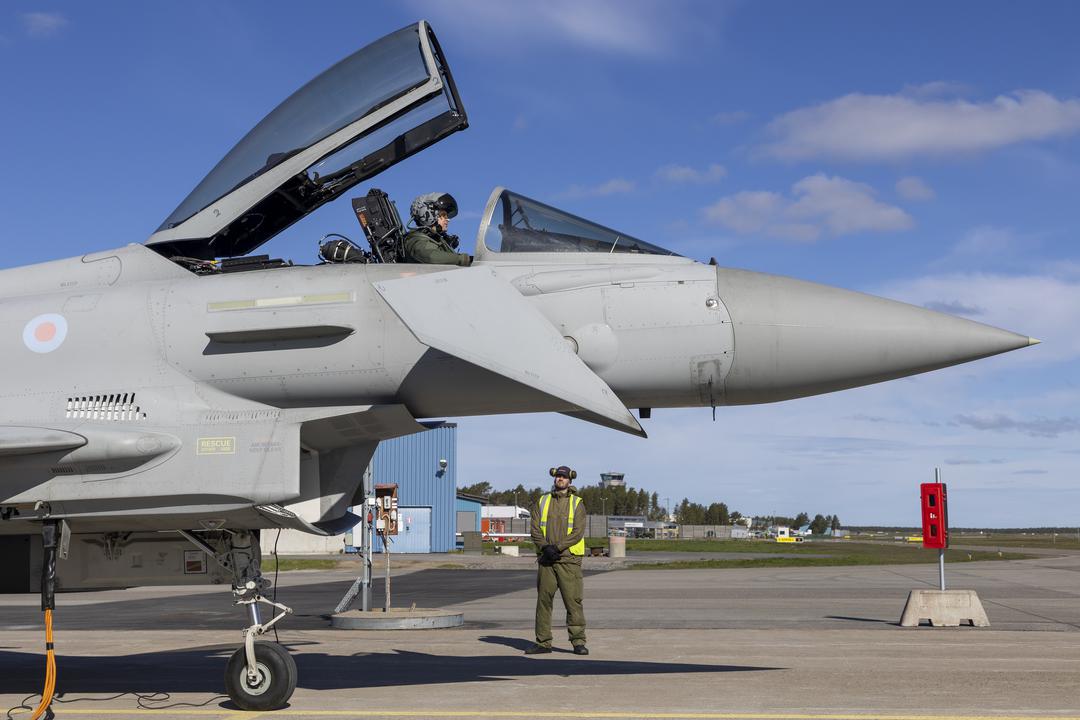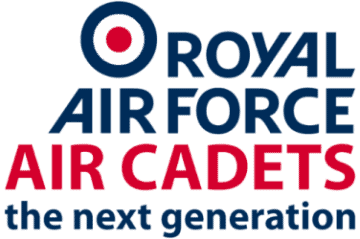The RAF and Swedish Air Force (SwAF) have a long history of working together and with Sweden’s upcoming accession to NATO, co-operation between the two forces is set to become even greater.
In July, Türkiye dropped its veto of Sweden joining the military alliance, paving the way for the Scandinavian country to become its 32nd member.
Ahead of Sweden’s ratification, Major General Jonas Wikman, the Chief of the Swedish Air Force, said the bond between his force and the RAF will only grow stronger as they integrate with NATO.
“We have a long history of working together on all levels and all domains. I think for us integrating our capability, which is sometimes unique and sometimes the same, with UK capabilities, one plus one equals three in this case.
We are getting new Gripen aircraft, we are getting the GlobalEye, we're also getting capabilities in space, so I think we will try to find the best way to integrate those capabilities for the future of NATO membership and I think we have a lot to give and we have a lot to get and we are truly, in this case, stronger together.”
Major General Jonas Wikman
Chief of the Swedish Air Force
The partnership between the SwAF and the RAF is well established and was bolstered further last year following the invasion of Ukraine when Sweden, along with neighbours Finland, signed an agreement with the UK to create an Article 5 style promise that the countries would support each other if any of them were attacked. The deal also saw increased intelligence sharing as well as stepped up deployments. The same year, RAF deployed jets to both countries to train with them and provide an increased presence in the region.

The forces frequently train together on regular exercises, and in May, RAF Typhoons conducting the NATO Baltic Air Policing Mission in Estonia took part in the largest annual Swedish defence exercise — Exercise Aurora. Their job was to provide air-to-air combat training for the Swedish Air Force over Sweden’s largest island, Gotland. Known as ‘red air’ the Typhoons carried out the role of aggressors that the Swedish Saab Gripen fighters had to face. This tested the Swedish Quick Reaction Alert procedures to respond at short notice to airborne threats.

The RAF and SwaF again flew together later in the month for Exercise Arctic Challenge, which saw Typhoons, a Voyager and a team of surface-to-air missile specialists from RAF Spadeadam deploy to Kallax airbase for a large exercise involving 150 aircraft from 14 different nations. The biennial exercise looks to increase operational effectiveness and improve resource allocation through increased cooperation.

Wing Commander Mark Robertson was the Detachment Commander for Exercise Arctic Challenge 2023 and said training with the SwAF was hugely beneficial.
“The Swedish have been great hosts. What they offer us here is a much greater overland training air space than we get at home, so it's a really unique and valuable experience.”
Wing Commander Mark Robertson
Detachment Commander for Exercise Arctic Challenge 2023
Colonel Matthias Ottis, Deputy Commander of F7 Wing, said SwAF was already well integrated with both NATO and the RAF and he was looking forward to being able to build on that to contribute to roles such as the air policing mission above the skies of Europe.
“The Swedish Air Force has now for many years been working together with our NATO partners. I think on the tactical and unit level, we are well integrated and up to speed on techniques and Procedures. We are quite confident in that aspect. And I think we have a lot to bring to the table.”
Colonel Matthias Ottis
Deputy Commander of F7 Wing
When it comes to tactical capability, Sweden is one of the European partners the UK worked with to develop the state- of-the-art beyond-visual-range Meteor air to air missiles and Swedish-made chaff and flare dispensers are used on UK Typhoons. Saab’s Giraffe radar is a key part of the UK’s Sky Sabre ground-based air defence system, while almost 40 per cent of the Gripen is sourced from UK companies, including radars designed and built by Leonardo in Edinburgh.
Captain Patrik Lange is a display pilot who flies the Gripen and said the aircraft differs from, and compliments, the capability of the Typhoon.
“We are small but we are many and we can often stay longer in the air because it’s [The Gripen] not so fuel consuming as the Eurofighter. I think that might be a good thing to compliment the RAF and NATO with.”
Captain Patrik Lange
Gripen Display Pilot
Looking to the future, SwAF are due to get Gripen E, an upgrade on their current Gripen C/D models boasting increased range and state-of-the-art electronic warfare capabilities.
They have also ordered two new radar reconnaissance and command aircraft, GlobalEye, which can stay in the air longer than the current capability and uses a radar mounted on top of the fuselage, a so-called Erieye Extended Range, to increase its range.
Looking ahead to working with Sweden as a fellow member of NATO, Air Marshal Harvey Smyth, The RAF's Air & Space Commander said the SwAF would be a welcome asset.
“The RAF has a longstanding and extremely valuable relationship with our counterparts in the SwAF and I am looking forward to seeing this grow further as Sweden becomes a member of NATO.
As our two forces regularly deploy on exercises together, we know just how strong Sweden’s capability is and it will be a great asset to the shared role NATO forces play in keeping the skies above Europe safe.
Sweden’s geographical position between the North and Baltic Seas makes it perfectly placed to react quickly to any threats in the region — something that is not only true in a QRA capacity thanks to their Gripen aircraft, but also acting in an ISTAR role with GlobalEye.”Air Marshal Harvey Smyth
RAF's Air & Space Commander








